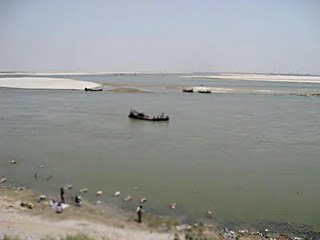 | ||
In the sixth century CE, a Hindu sage named Mudgal Muni, appeared in the city and established two shrines, one at a rock at Kashtaharini Ghat. In the 26th Adhyaya (chapter) of Adi Kanda of the Valmiki Ramayana, it is mentioned that both Lord Rama and his brother Lakshmana on their way back from the encounter with Taraka, the demoness, took rest at the spot.The relaxation they had, gave rise to the name of Kashtaharini Ghat.
Contents
The Remover of Distress
Munger has always been a paradise for pilgrims, saints and devotees. And the one place, which attracts most of them, is a bathing venue at the Ganges, called Kastaharni-Ghat, which literally means:The Bathing place which expels all pains.It is believed that - One who takes a dip in this ghat receives solace and cure from bodily pains,as per the local and ancient belief of the Hindu folklore.Religiously, it has got significant importance, as it has a northern flow,which is referred as Uttarvahini Ganga.
Blessed Waters
Being a pilgrimage it is believed that on his return journey from Mithila to Ayodhya after marrying Sita, Lord Sri Rama took a dip in this water to relieve themselves from fatigue. This is also the place people like to visit in Morning and evening to catch the glorious glimpse of Sunrise and Sunset.The ghat premises also consist of Sri Jagannatha Temple Trust, Kastharni Ghat, MUNGER.
A copper plate known as the 'Munger Plate' was discovered in Munger way back in 1780. Mir Kasim conquered Munger and made it his capital till the army of East India Company captured Munger.
